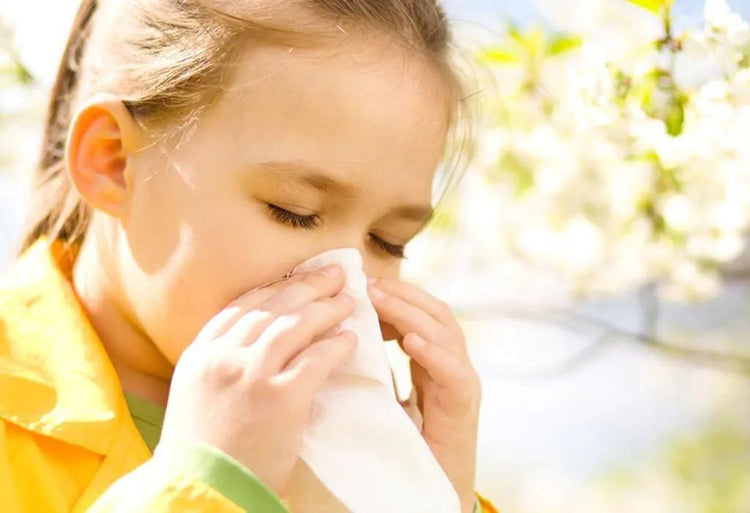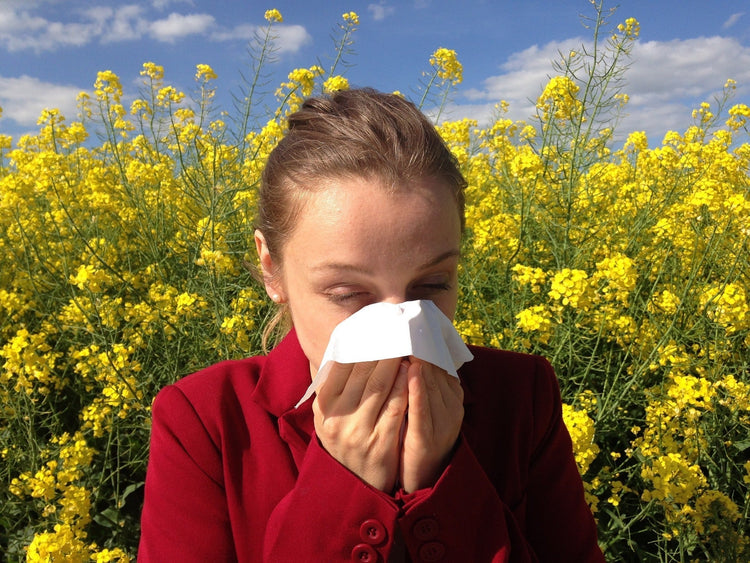Strawberry Allergy: Symptoms, Causes, Diagnosis, and Management


Related products
Strawberry allergy: Definitive Guide
Strawberry allergy is an adverse immune reaction to proteins found in strawberries, causing symptoms ranging from mild to severe. Though strawberry allergies are relatively rare, affecting only a small percentage of the population, they can be distressing and dangerous for those who experience them. It is crucial to understand the symptoms, causes, and diagnostic methods in order to effectively manage and treat this allergy. For general testing needs or to confirm suspicions about strawberry or fruit allergies, the Allergy Testing Kit provides a reliable home-based solution, enabling individuals to take proactive steps toward allergy management with expert guidance
Prevalence of strawberry allergy
Though exact numbers vary, it is estimated that around 0.5% to 2% of the population experiences a strawberry allergy. This prevalence may be higher in regions where strawberries are more commonly consumed. According to Dr. Susan Waserman, the potential severity of allergic reactions necessitates awareness and early diagnosis. For individuals noticing recurring symptoms after consuming strawberries or other fruits, an Environmental Intolerance Test may help uncover reactions triggered by pollen-related cross-reactivity.
Importance of understanding symptoms, causes, and diagnosis
Early recognition of symptoms, identifying causes, and obtaining a proper diagnosis are crucial in managing strawberry allergy. Dr. Jane Lucas, a consultant in paediatric allergy at Southampton Children's Hospital, emphasises the need for accurate diagnosis to ensure appropriate treatment and to prevent future reactions.
The need for proper management and treatment
Proper management of strawberry allergy involves avoidance of strawberries, prompt treatment of symptoms, and the administration of emergency medication when necessary. Dr. Adrian Morris, an allergy specialist at the Surrey Allergy Clinic, highlights the importance of educating patients on how to manage their allergy, including recognising symptoms, administering emergency medication, and seeking professional help.
Symptoms of Strawberry Allergy
Mild to moderate symptoms
1. Hives 2. Itchy skin 3. Rash 4. Swelling 5. Redness Mild to moderate symptoms of strawberry allergy can include hives, itchy skin, rash, swelling, and redness. Dr. Alexandra Santos, an expert in pediatric allergy and immunology at King's College London, explains that these symptoms typically occur within minutes to hours after consumption of strawberries and can last for several hours.
Respiratory symptoms
1. Sneezing 2. Runny nose 3. Wheezing 4. Difficulty breathing
Respiratory symptoms associated with strawberry allergy include sneezing, runny nose, wheezing, and difficulty breathing. According to Dr. Paul Turner, a consultant in paediatric allergy at Imperial College London, these symptoms may result from the release of histamine and other inflammatory mediators in the airways.
Severe symptoms
1. Anaphylaxis 2. Rapid onset of symptoms 3. Difficulty breathing 4. Drop in blood pressure 5. Loss of consciousness Severe symptoms of strawberry allergy can be life-threatening and include anaphylaxis, rapid onset of symptoms, difficulty breathing, a drop in blood pressure, and loss of consciousness. Dr. Pamela Ewan, a consultant allergist at Addenbrooke's Hospital, stresses the importance of immediate medical intervention if an individual experiences these symptoms, as they can rapidly progress to a life-threatening situation.
Causes of Strawberry Allergy
Strawberry allergy is caused by the immune system identifying certain proteins in strawberries as harmful. This response involves the release of Immunoglobulin E (IgE) antibodies and histamine, leading to symptoms. Cross-reactivity is another contributing factor—some people allergic to birch pollen or latex may also react to strawberries. To rule out broader food triggers or determine if strawberries are part of a larger issue, a Food Intolerance Test can be a good starting point.
Immune system response
1. Immunoglobulin E (IgE) antibodies 2. Histamine release Strawberry allergy is caused by an immune system response to proteins in strawberries. The body produces Immunoglobulin E (IgE) antibodies, which trigger the release of histamine and other inflammatory mediators, causing allergic symptoms. Dr. Ronald van Ree, a professor of molecular allergology at the University of Amsterdam, explains the mechanisms behind this immune response.
Cross-reactivity
1. Pollen-food allergy syndrome 2. Latex-fruit syndrome Cross-reactivity between proteins in strawberries and other substances can cause allergic reactions. Pollen-food allergy syndrome is a common cause of cross-reactivity in which individuals allergic to certain pollens, such as birch pollen, also react to proteins in strawberries. Latex-fruit syndrome is another example, where people allergic to latex may also react to strawberries. Dr. Carina Venter, an associate professor of pediatrics at the University of Colorado, further elaborates on cross-reactivity and its role in allergy development.
Genetic factors
Genetic factors may predispose individuals to developing a strawberry allergy. Dr. Clare Mills, a professor of molecular allergology at the University of Manchester, suggests that a family history of allergies or other atopic conditions, such as asthma, eczema, or hay fever, increases the risk of developing a strawberry allergy.
Testing and Diagnosis of Strawberry Allergy
Diagnosis typically begins with a medical history and physical examination. This is followed by a skin prick test or blood test to confirm sensitivity to strawberry proteins. For a more comprehensive and convenient option, the Combined Allergy and Intolerance Blood Test can help detect both food and environmental triggers in one go—ideal for individuals with multiple symptoms or sensitivities.
Medical history and physical examination
Diagnosis of strawberry allergy begins with a thorough medical history and physical examination by a healthcare professional, who will assess the likelihood of an allergy based on reported symptoms and their timing.
Skin prick test
A skin prick test is often used to confirm a suspected strawberry allergy. During this test, a small amount of strawberry extract is applied to the skin, which is then pricked with a needle. A positive reaction, such as a raised, red bump, indicates an allergy.
Blood test
1. Specific IgE antibodies 2. ImmunoCAP or enzyme-linked immunosorbent assay (ELISA) Blood tests, such as ImmunoCAP or enzyme-linked immunosorbent assay (ELISA), can be used to measure levels of specific IgE antibodies to strawberry proteins.
Management and Treatment of Strawberry Allergy
The cornerstone of managing strawberry allergy is avoidance. Individuals should carefully read food labels and ask about ingredients when dining out. In cases of uncertainty or persistent symptoms, a deeper investigation using the Premium Intolerance Test may help identify lesser-known food intolerances that could be aggravating allergic responses.
Avoidance of strawberries and related foods
The primary treatment for strawberry allergy is the strict avoidance of strawberries and related foods. This includes checking food labels, informing food establishments of the allergy, and being cautious about cross-contamination during food preparation.
Antihistamines for mild to moderate reactions
Antihistamines can be used to treat mild to moderate allergic reactions, such as itching, hives, and swelling. Dr. Helen Brough, a consultant in paediatric allergy at Guy's and St. Thomas' Hospital, recommends over-the-counter antihistamines for symptom relief, but advises consulting a healthcare professional for proper dosage and advice.
Epinephrine for severe reactions
Epinephrine, also known as adrenaline, is the first-line treatment for severe allergic reactions, including anaphylaxis. Individuals with a known strawberry allergy should carry an epinephrine auto-injector, such as an EpiPen, and know how to use it in case of an emergency.
Allergy shots (immunotherapy)
In some cases, allergy shots, or immunotherapy, may be recommended for individuals with severe strawberry allergies. This treatment involves the administration of gradually increasing doses of strawberry allergen extract to help desensitise the immune system. However, this treatment option is still in the experimental phase for strawberry allergy and is not widely available.
Awareness and preparation
Being aware of the allergy and prepared to manage it is crucial. This includes educating oneself about the allergy, understanding how to avoid allergens, knowing how to recognise and treat symptoms, and having an emergency plan in place.
Living with a Strawberry Allergy
Adapting to life with a strawberry allergy means making informed choices about food and lifestyle. Families managing strawberry allergies in children may benefit from the Intolerance Tests Collection, which offers at-home kits designed to help uncover common sensitivities and support personalised dietary planning.
Dietary modifications
1. Identifying and avoiding hidden sources of strawberries 2. Alternative fruits and ingredients Living with a strawberry allergy requires dietary modifications, such as identifying and avoiding hidden sources of strawberries in processed foods, beverages, and personal care products. Additionally, individuals with a strawberry allergy can explore alternative fruits and ingredients to maintain a balanced and nutritious diet.
Coping with social situations
1. Communicating with friends, family, and food establishments 2. Carrying allergy-friendly snacks Managing a strawberry allergy in social situations involves clear communication with friends, family, and food establishments about the allergy and its potential consequences. Carrying allergy-friendly snacks can also help ensure that safe food options are available during social events.
Staying informed and updated on allergy research and treatments
Regularly staying informed about the latest research and treatment options can help individuals with a strawberry allergy make informed decisions about their care and management.
Conclusion
The importance of accurate diagnosis and proper management
An accurate diagnosis and proper management of strawberry allergy are vital for maintaining health and preventing severe reactions. This includes understanding the symptoms, causes, and diagnostic methods, as well as seeking appropriate treatment.
The potential for improvement with appropriate treatment strategies
With appropriate treatment strategies, such as avoidance, medication, and potentially immunotherapy, individuals with a strawberry allergy can experience an improvement in their quality of life and a reduction in the frequency and severity of allergic reactions.
Living a healthy and balanced life with a strawberry allergy
By making dietary modifications, communicating effectively, and staying informed about research and treatments, individuals with a strawberry allergy can live a healthy and balanced life. Managing a strawberry allergy may seem challenging, but with the right knowledge, support, and strategies, it is possible to maintain a fulfilling lifestyle while managing the allergy effectively. To learn more about Allergies, read our comprehensive guide that covers: Allergies:, Types, Causes, Symptoms, Diagnosis, and Treatment options. If you are looking for treatments for hay fever or general allergens, then visit our extensive page with allergy and hayfever medication and tablets.


































 Rated Excellent by 26,523+ Reviews
Rated Excellent by 26,523+ Reviews